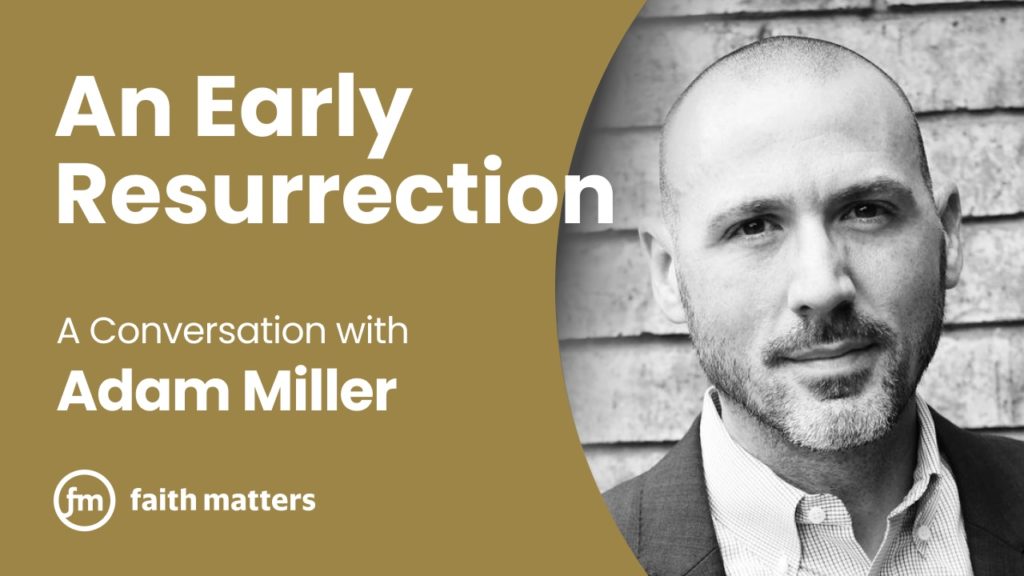Say, hypothetically, that someone wants to write an optimistic essay about gender in the Latter-day Saint tradition. She can draw on a range of materials within our adventurous theology. LDS teachings on the Mother in Heaven exalt the divine feminine. The biblical Eve is celebrated as a moral hero whose courage propelled the human race into existence. Our highest religious ordinances insisted from their foundation on the inclusion of women with men in holy spaces and sacraments.
Our history, too, is promising. A venerable woman-led organization, the Relief Society, was established according to “the pattern of the priesthood” and has been essential to the flourishing of the church and its members. Utah women won the right to vote long before their sisters across the nation, and their frontier feminism advocated “The Rights of the Women of Zion, and the Rights of the Women of all Nations”. Early LDS women preached, prophesied, and blessed with the priestly authority of their community.
Even seemingly gender-neutral Restoration teachings underscore women’s freedom and dignity. Our bedrock concept of agency assigns women and men equal capacity to act as ethical agents to build Zion in justice and peace. More abstractly, Joseph Smith’s teaching that “all spirit is matter” demolishes a centuries-old sexist belief that the masculine principle of spirit is superior to the female principle of matter.
But.
These teachings–optimistic, arguably revolutionary in their implications for gender–are housed inside a patriarchal institution, the Church of Jesus Christ of Latter-day Saints, which is led by men at every level. For some, the patriarchal structure of the Church neutralizes the progressive force of our theology when it comes to gender.
I think they’re right to be concerned.
Think of it like this. A tall house stands on a hilltop. Its gates and doors are open to the rise. Gables finger the sky, windows silver the sun. Yet notice its frame: askew of the horizon, it leans on its foundation. Drop a marble on the floor and it will soon find the corner.
A male-governed institution or culture–a patriarchy–is a house tilted on its foundation. Its authority is concentrated in men, and its structure leans toward male experience. As a result, even the best-intentioned male-led institutions have a propensity to undervalue female agency. I don’t see any way around it.
How is it that this patriarchal institution can harbor such stirring ideas about women’s power? It’s an intriguing intellectual puzzle, to be sure, but for many it’s much more than that. It’s a searing personal pain.
Patriarchy can show up as chauvinism or worse, and over the course of our history some women have suffered at the hands of men who exploit the Church’s male-tilted structure for abusive ends. To the extent that our patriarchal culture devalues women or countenances gender-based abuse of any kind, it is an occasion of sin, individual and collective, that we are urgently called to denounce and reform.
But is that enough? Can women’s agency flourish within a male-led organization, however respectful and upstanding? I don’t know how to answer that question for sure. But our history offers some clues.
Consider again the example of early LDS women and the thriving community of female solidarity and endeavor that they built. It’s as if they ripped up the sloping baseboards of patriarchy and somehow leveled the floors, to the astonishment of outsiders. The marble zigged when many assumed it would zag. What’s fascinating is how these early sisters repurposed the materials of patriarchy itself to accomplish their ends.
The lived practice of polygamy offered an alternative to conventional paired spousal duties. Latter-day sisters seized on this and went to graduate school, to suffrage conventions, to Congress. Their lived theology built sisterhood inside marriage, which they upcycled into a woman-led community of sisterly solidarity, the Relief Society. Marriage put them at the center of the faith’s holiest rite, from which they took spiritual power to bless, heal, and prophecy.
Acting on the necessity, availability and inspiration that empowers all creativity–even God’s creation of the universe–women took the raw materials of patriarchy and leveled the floors, repurposing them into something unexpected and beautiful. They were creating in the image of God.
There’s evidence that the same thing happens in the present. While patriarchy’s male tilt rightly comes under cultural scrutiny, LDS family and gender culture seem to be working pretty well in the lives of many adherents. As Western family formation and church participation decline hand-in-hand, Latter-day Saints continue to find spouses, form families and participate in religious congregations at comparatively high rates.
Statistics don’t prove the legitimacy of patriarchy, much less justify its failings or salve the sting of those whom it does not serve well. But they may lead us to look more closely at individual lives.
And when we look, especially outside of North America, we find LDS women repurposing patriarchy in surprising ways. The Proclamation, for instance, mandates men’s involvement in the practical rearing and moral formation of children, of shouldering financial responsibility and adhering to marital fidelity. To women in many places, this represents a hopeful vision of men’s domestic involvement and parental partnership. In the living of it, men’s patriarchal presiding in the home is repurposed into their partnered presence in home life.
Male-led institutions may be put to new social purposes in other ways as well. Against the often-illusory promises of modern meritocracy and technocracy–the promotion of the (supposedly) smart, qualified and able–remaining patriarchies may, if they are trustworthy, provide different perspectives with which to critique the excesses and injustices of modern individualism. Difference holds the world’s door ajar for new currents of spiritual creation.
The experience of sisters past and present shows them working within male-led institutions to harness their assets for the good of the individual, family, and community. The floors can be leveled, though it takes a tremendous investment in extra labor, creativity, conflict, repentance and love.
There’s no denying, though, that the process is inefficient, energy intensive, and at best yields imperfect results. And I’m not here to argue that there is something superior or even necessary about male leadership in the church or the family. That kind of argument is especially ill-advised in a church that affirms God’s ongoing involvement in “many great and important things pertaining to the Kingdom of God.”
But for now, this is the house I live in. For now, our male-led church makes me face up to the fact that life happens on the hard edges of existence. Creation happens when we take up materials not custom designed for our use. Grace happens when we improvise community with the inconvenient materials at hand.
In a way, this is the deep curiosity at the heart of the Latter-day Saint tradition, beginning with its story of the world’s creation. What can God make out of this? How powerful is the transformation of grace? These sixteen small stones, can God make them glow? This ink-blotted manuscript, can God make it scripture? These fragile human ties, can God make them endure for another day, or another thousand lifetimes?
This flawed patriarchal institution, can God transform it into a vehicle of grace?
The other great insight of the Restoration: we all get to help answer that question, if we’re game for the challenge.
Further Reading
Crossings: A Bald Asian American Latter-day Saint Woman Scholar’s Ventures through Life, Death, Cancer & Motherhood (Not Necessarily in that Order). Melissa Wei-Tsing Inouye. Deseret Book and BYU Maxwell Institute, 2019.
The First Fifty Years of Relief Society: Key Documents in Latter-day Saint Women’s History. Edited by Jill Mulvay Derr, Carol Cornwall Madsen, Kate Holbrook, Matthew J. Grow. Church Historian’s Press, 2016.
A House Full of Females: Plural Marriage and Women’s Rights in Early Mormonism, 1835-1870. Laurel Thatcher Ulrich. Knopf Doubleday Publishing Group, 2017.
One Hundred Birds Taught Me to Fly: The Art of Seeking God. Ashley Mae Hoiland. Neal A. Maxwell Institute for Religious Scholarship, Brigham Young University, 2016.
The Power of Godliness: Mormon Liturgy and Cosmology. Jonathan A. Stapley. Oxford University Press, 2018.
Sister Saints: Mormon Women since the End of Polygamy. Colleen McDannell. Oxford University Press, 2018.
Women at Church: Magnifying LDS Women’s Local Impact. Neylan McBaine. Greg Kofford Books, Incorporated, 2014.



